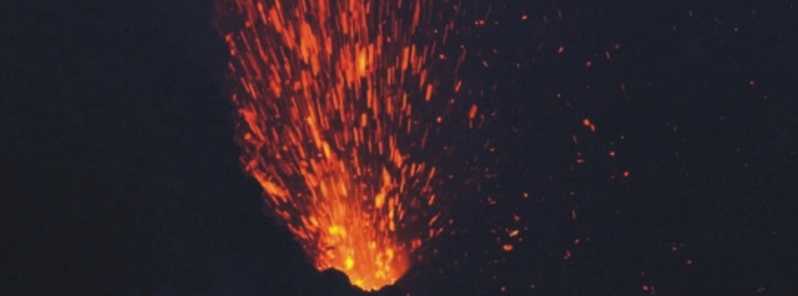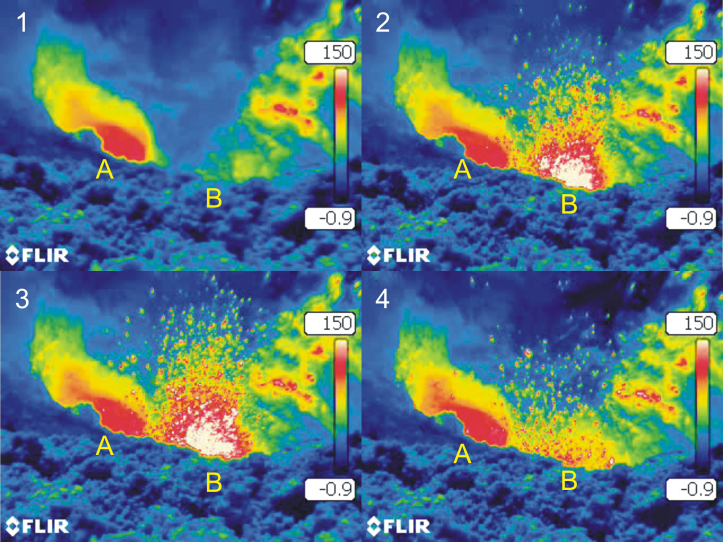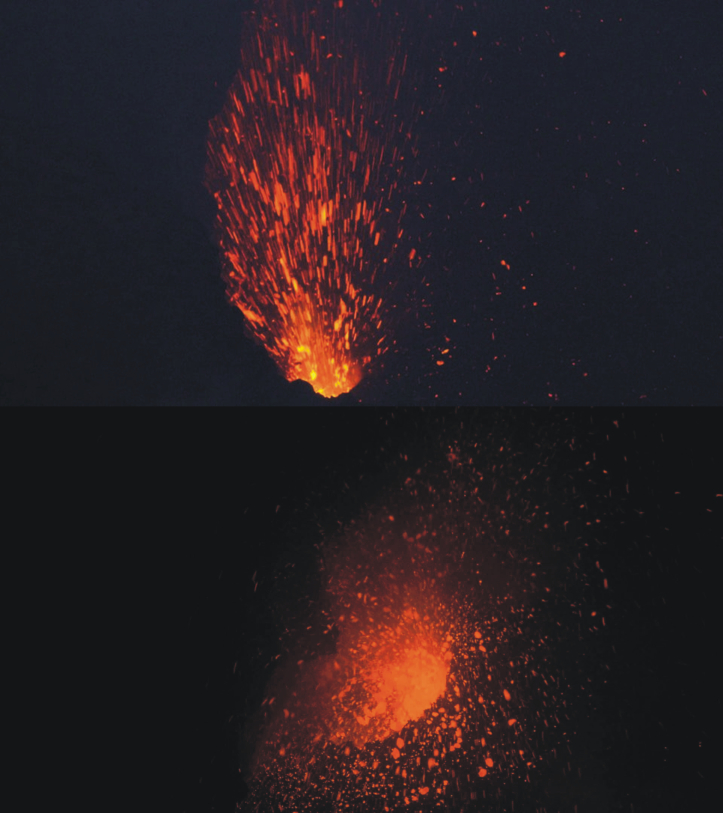New Strombolian activity at Mount Etna, volcano gradually reawakening, Italy

Scientists observing Italy's Mount Etna are reporting new strombolian activity at the volcano and gradual reawakening of the volcano.
14 months after its last major eruption, which included numerous lava flows and Strombolian explosions, Mount Etna is again showing signs of gradual awakening, with Strombolian activity concentrated particularly at the Bocca Nuova and the Northeast Crater, INGV volcanologists Boris Behncke and Marco Neri reported July 25.
The first to 'wake up' was the Bocca Nuova, which is producing strong and continuous roaring for some weeks now.
"The activity is gradually increasing in intensity, and recent thermal images clearly show Strombolian explosions that take place at two mouths located at the bottom of the crater," Behncke and Neri noted.
The incandescent material is occasionally ejected into the air and over the edge of the crater but it falls mainly back inside of it.

Thermal images of a Strombolian explosion, located at the bottom of the Bocca Nuova crater, shown in sequence (from 1 to 4). At the bottom of the crater are two openings (A and B), which eject incandescent material up to a few tens of meters in height. The images were taken July 17, 2018, by Giuseppe Salerno (INGV-OE).
The Northeast Crater has also reactivated significantly.
During the eruption of May 2016, this crater was completely blocked by the volcanic material, but it reopened in November 2017 and continued emitting gaseous plume that characterizes it.
The crater now shows a progressive increase in intensity, with new mouths opening at the bottom, one of which produces small Strombolian explosions.

Strombolian explosions on the bottom of the Northeast Crater on July 20 and 21, 2018 captured by Michele Mammino. There are three vents on the bottom, one of which ejects incandescent material up to 10 m (33 feet) into the air.
Video taken on July 12 shows explosions with glowing lava fragments inside one of the four summit craters of Etna. "The voice of Etna is loud and clear," Behncke said.
The voice of Etna is loud and clear. While the Bocca Nuova, the largest of Etna's summit craters, is filled with gas, the sounds of Strombolian activity (explosions ejecting incandescent rock fragments) are well audible. 12 July 2018 pic.twitter.com/TQ6TD0vPdz
— Boris Behncke (@etnaboris) July 13, 2018
Direct monitoring of volcanic activity at Mount Etna complements the analyses carried out through the INGV instrumental networks and therefore allows a complete and precise picture of the volcano's activity status. A job that is especially necessary especially this summer, when the volcano is frequently visited by tourists and fans of Etna.


Geological summary
Mount Etna, towering above Catania, Sicily's second largest city, has one of the world's longest documented records of historical volcanism, dating back to 1500 BCE. Historical lava flows of basaltic composition cover much of the surface of this massive volcano, whose edifice is the highest and most voluminous in Italy. The Mongibello stratovolcano, truncated by several small calderas, was constructed during the late Pleistocene and Holocene over an older shield volcano. The most prominent morphological feature of Etna is the Valle del Bove, a 5 x 10 km (16 404 x 32 808 feet)horseshoe-shaped caldera open to the east.
Two styles of eruptive activity typically occur at Etna. Persistent explosive eruptions, sometimes with minor lava emissions, take place from one or more of the three prominent summit craters, the Central Crater, NE Crater, and SE Crater (the latter formed in 1978). Flank vents, typically with higher effusion rates, are less frequently active and originate from fissures that open progressively downward from near the summit (usually accompanied by strombolian eruptions at the upper end). Cinder cones are commonly constructed over the vents of lower-flank lava flows. Lava flows extend to the foot of the volcano on all sides and have reached the sea over a broad area on the SE flank. (GVP)
Featured image: Etna on July 12, 2018. Photo by Michele Mammino

Commenting rules and guidelines
We value the thoughts and opinions of our readers and welcome healthy discussions on our website. In order to maintain a respectful and positive community, we ask that all commenters follow these rules:
We reserve the right to remove any comments that violate these rules. By commenting on our website, you agree to abide by these guidelines. Thank you for helping to create a positive and welcoming environment for all.